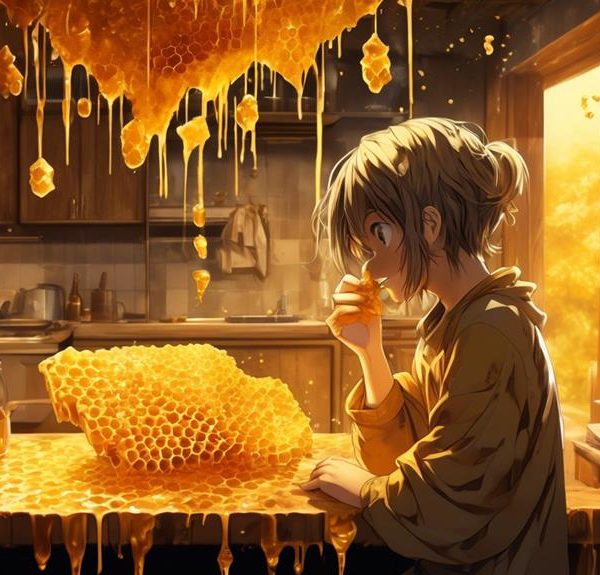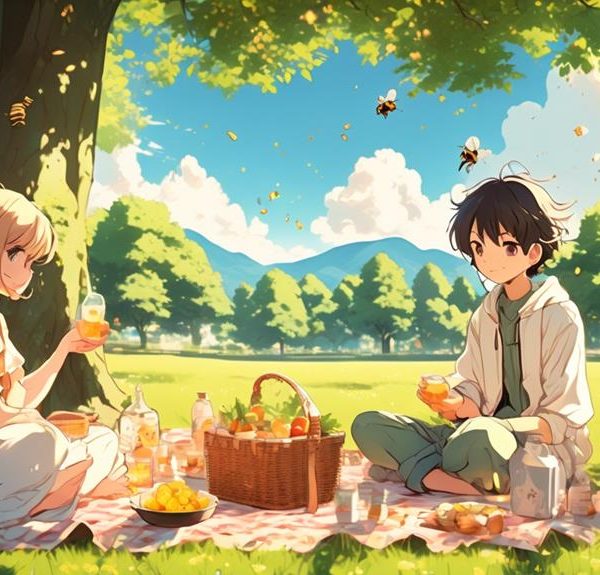Take a captivating journey into the life of a queen bee and discover if she ever ventures outside her hive.
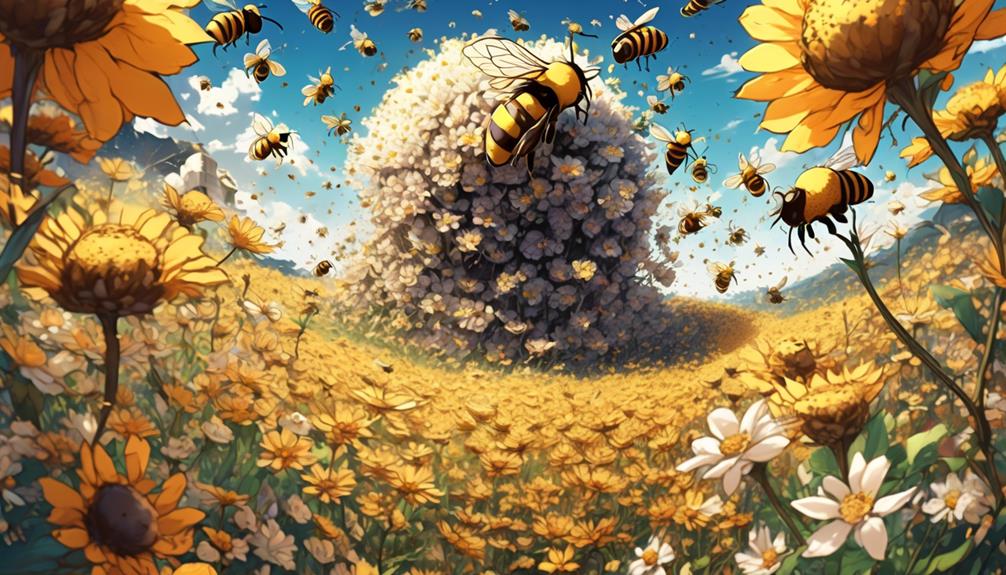
Can Queen Bees Leave the Hive?
Did you know that a single hive can house up to 60,000 bees, yet there's only one queen bee in the mix? That's right, you're stepping into a world where one female rules the roost, laying up to 2,000 eggs a day to keep the colony thriving.
Now, you might be wondering, with such a vital role, does the queen ever get to leave the hive? Well, the answer might surprise you. I won't spill the beans just yet, but let's just say she doesn't spend her entire life cooped up.
So, stick around, you're about to get a fascinating insight into the life and movements of a queen bee.
Key Takeaways
- The queen bee is the primary reproductive female in the hive and plays a crucial role in the colony's survival.
- The queen bee's development into a queen is triggered by a diet of royal jelly, and she can live for up to five years.
- When the hive becomes overcrowded or food becomes scarce, the queen bee can lead a swarm migration to find a new location.
- Queen bee movements are strategic, deliberate, and important for the dynamics and conservation of bee colonies.
Understanding Queen Bee's Role
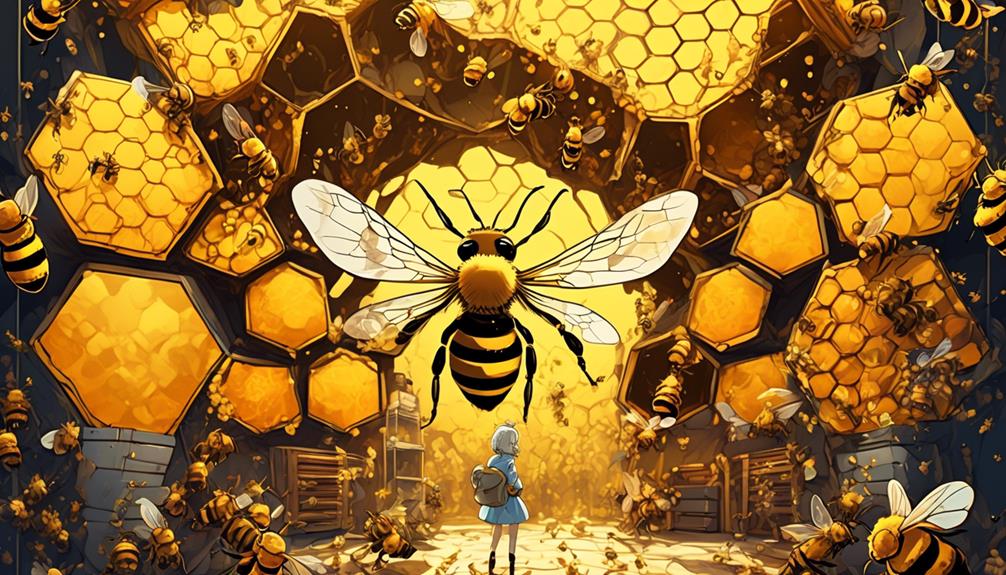
In the complex world of the hive, you'll find that the queen bee's role is indispensable, serving not only as the primary reproductive female but also as a key influencer in the social structure and overall functionality of the colony. She's the mother of all worker bees and drones, utilizing her specialized anatomy to lay thousands of eggs daily.
Her pheromones, chemical signals she secretes, are vital for maintaining social order and cohesion within the hive. These scent markers guide worker bees, ensuring the tasks necessary for the hive's survival are carried out efficiently. They also suppress the reproductive systems of female workers, preventing competition.
The queen's mating flight is a crucial event. She'll leave the hive only once to mate with multiple drones in mid-air, storing up to a lifetime's worth of sperm. This ensures genetic diversity within the colony, enhancing its resilience against diseases and environmental changes.
You'll find it fascinating that the queen bee's lifespan, up to five years, is significantly longer compared to her offspring's. This longevity is attributed to her exclusive diet of royal jelly, a nutrient-rich substance produced by worker bees. It's clear; the queen bee is truly the backbone of a thriving hive.
The Queen Bee's Lifetime Journey

Throughout her remarkable lifetime, the queen bee embarks on an intricate journey, shaped by a series of distinct phases that play a pivotal role in the survival and prosperity of the hive. Here's a glimpse into her fascinating lifecycle.
Firstly, a larva is selected and fed with royal jelly, a protein-rich secretion from worker bees. This unique diet triggers her development into a queen, with her larval stage lasting just five days.
Next, she'll spend another seven days in her pupal stage, maturing within a specially constructed queen cell. Once she emerges, she isn't a fully fledged queen yet. She must first complete her mating flight, a crucial step where she'll mate with multiple drones in mid-air and store their sperm for future use.
After this, she's ready for her primary role as the hive's sole egg-laying machine. She can lay up to 2,000 eggs a day, ensuring the hive's continuity. She'll reign for up to five years, an impressive lifespan compared to worker bees.
If she becomes less productive, or dies, the workers will promptly rear a new queen. So, you see, her journey isn't just a personal saga, but a critical part of the hive's existence.
Swarm Migration and the Queen Bee
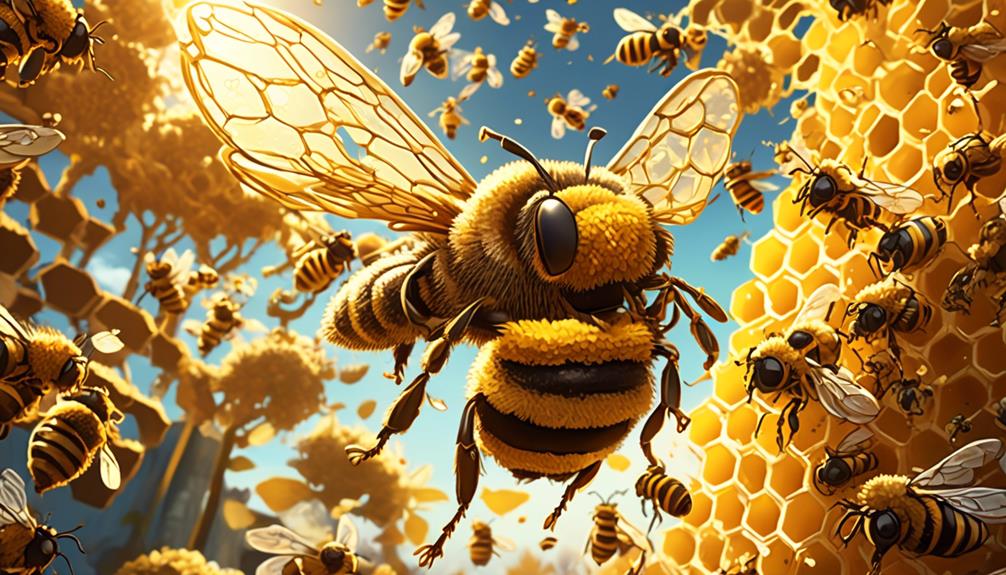
When the hive becomes overcrowded, it's the queen bee who must lead a swarm migration to establish a new colony. This isn't a hasty decision, but a carefully timed process.
You might wonder how this works. Well, the queen bee, followed by a group of worker bees which can number up to 60,000, leaves the original hive in search of a new location. This group, called a swarm, may travel considerable distances until they find a suitable site.
The queen bee's role in this migration is critical. She's the one releasing pheromones to guide the swarm, essentially acting as a beacon. Her health and strength directly affect the success of the migration.
During the journey, a phenomenon called 'queen piping' is observed. It's a sound emitted by the queen, thought to be a signal to prepare for the flight.
Factors Influencing the Queen's Departure
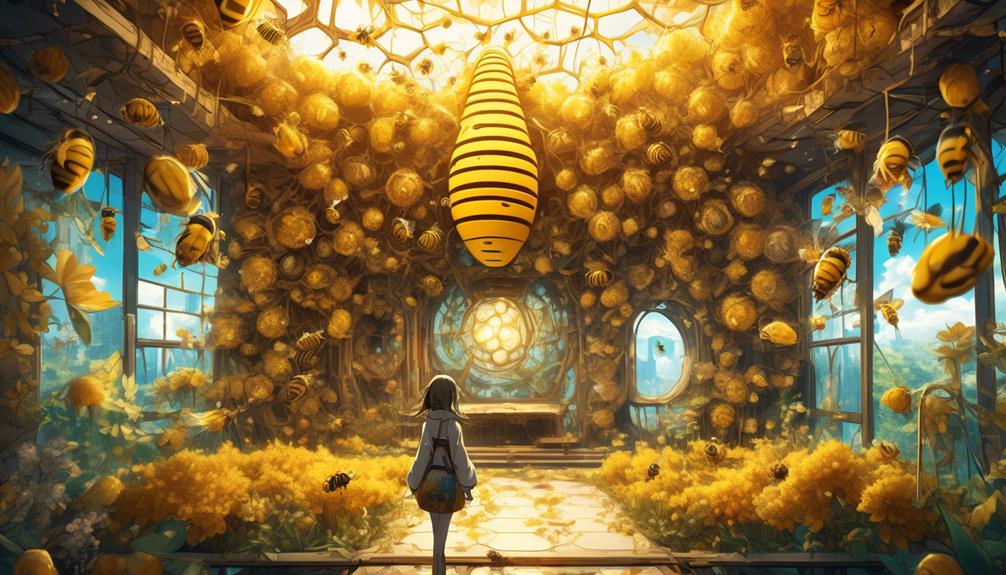
While it's clear that the queen bee's departure is crucial for the survival of the species, you might be curious about the specific factors prompting this pivotal move. It's a complex process influenced by many variables such as overcrowding, food scarcity, and the queen's age.
Overcrowding is a major trigger. As the hive grows and space becomes limited, worker bees will start to develop new queens. Sensing this, the old queen will prepare to leave, taking a swarm with her.
Food scarcity also plays a role. If the bees can't collect enough nectar and pollen to feed the hive, the queen may lead a swarm to a new location with more abundant resources.
The queen's age influences her likelihood to depart as well. Queens typically live for two to five years, and as they age, their egg-laying rate declines. This decrease can lead to unrest in the hive, causing workers to raise new queens and the old queen to vacate the hive.
Case Studies of Queen Bee Movements
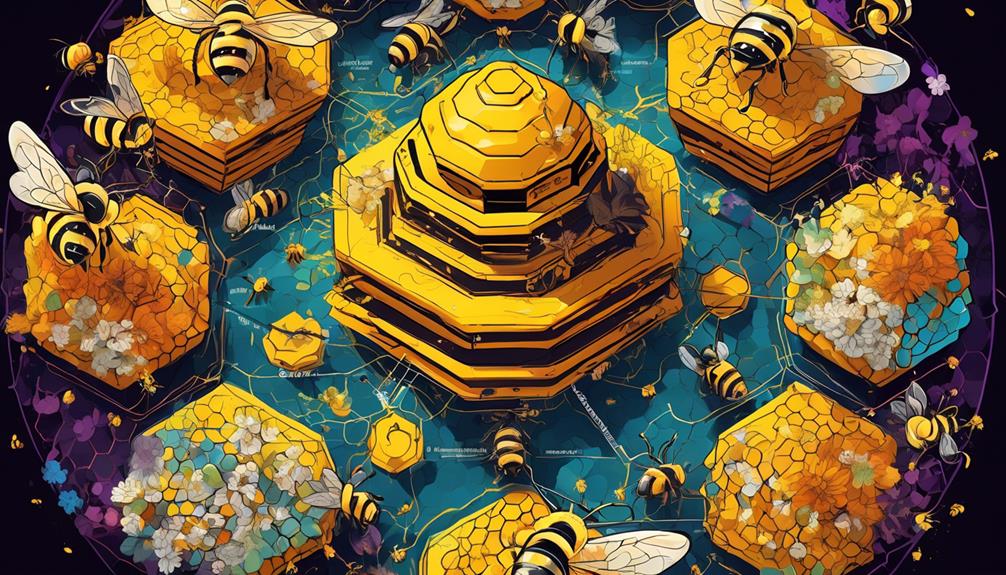
Diving into specific instances of queen bee movements can provide a clearer understanding of these complex behaviors and their impact on hive dynamics.
In a study conducted by the University of Illinois in 2019, GPS tracking was used to map the movements of newly-matured queen bees. The results illustrated that queens often leave the hive for mating flights, traveling significant distances to mate with multiple drones before returning.
In another case, researchers at the Sussex University monitored a hive during the 'supersedure' process, where a colony replaces an old or failing queen. It was observed that the old queen typically leaves the hive voluntarily, allowing the new queen to take over without conflict.
You'll find it fascinating that a queen bee's movements aren't just random. They're strategic, deliberate, and vital to the survival of the hive. Each journey, whether it's for mating or making way for a successor, plays a critical role in maintaining the delicate balance of the hive.
Understanding these movements can shed light on the intricate dynamics of bee colonies and offer insights into their conservation.
Frequently Asked Questions
What Are the Potential Risks to the Hive if a Queen Bee Leaves?
If a queen bee leaves, your hive risks becoming unproductive. She's the only one who can lay fertilized eggs, so without her, no new worker bees are born. There's also a risk of infighting among potential successor queens. If a new queen isn't quickly established, it could lead to a weakened or even extinct colony.
Therefore, a queen's departure can dramatically affect the health and longevity of your hive.
How Does the Queen Bee Communicate With the Worker Bees?
You might be fascinated to know that queen bees communicate with their workers through pheromones. These chemical signals are a language of their own, dictating the hive's behavior.
The queen's pheromones can suppress worker bees' reproductive systems, promote efficiency, and maintain harmony within the hive. So, even without speaking, the queen bee effectively rules her kingdom, ensuring the hive's survival and prosperity.
It's truly an amazing display of the natural world's complexity.
Do All Species of Bees Have a Queen Bee That Can Potentially Leave the Hive?
Yes, all species of bees do have a queen. However, not all queens are prone to leaving the hive. Typically, a queen bee only leaves for a mating flight or to start a new colony. It's a risky venture for the queen as she's exposed to predators and the elements. So generally, the queen stays put, laying eggs and maintaining the hive's population. It's really the worker bees who venture out for food collection.
How Does the Hive Adapt When a Queen Bee Decides to Leave?
When a queen bee leaves, the hive goes into survival mode. Worker bees immediately start feeding selected larvae with royal jelly to create a new queen. It's a race, because without a queen, the hive can't survive long. So, they've to ensure a new queen is bred quickly.
You'd be amazed at how efficient these tiny creatures are at adapting to such a major change in their hive's hierarchy.
What Is the Process of a New Queen Being Chosen or Born When the Previous One Leaves?
When the old queen leaves, worker bees select several young larvae to potentially become the new queen. They're fed a diet of royal jelly, which triggers their development into queens. Only one will ultimately reign, though.
The first to emerge kills the other potential queens. If two emerge simultaneously, they'll fight to the death. It's a brutal process, but ensures the strongest queen takes the throne.
Conclusion
So, can queen bees leave the hive? Absolutely, but it's not a jaunt. It's a life-altering journey, often involving swarm migration. Various factors, like overcrowding and resource scarcity, can trigger this departure.
Yet, every queen's movements are unique, as evidenced by different case studies. Understanding the queen bee's movement helps us grasp the complex, fascinating world of bees, further illuminating their vital role in our ecosystem.

